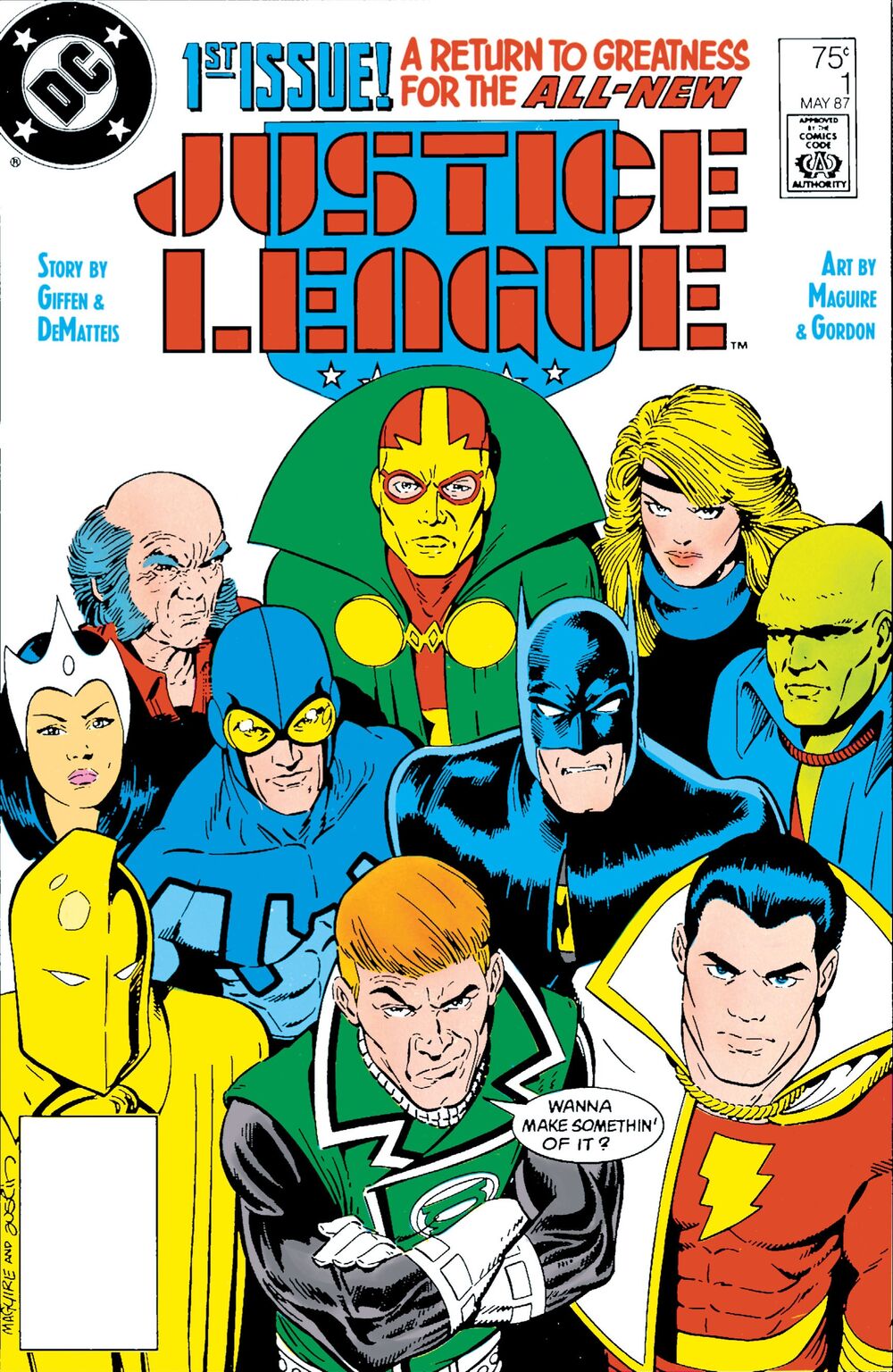In 1987, after the Crisis on Infinite Earths that reset the DC Universe, Andy Helfer was tasked with bringing together a creative team to create the new Justice League. He brought in Keith Giffen, who, at that point was best known for his creation of Ambush Bug, who felt he was not up to the task of dialoguing the series, so they brought in J.M. DeMatteis due to his work on Moonshadow. DeMatteis actually thought it was a one-issue pairing, but he ended up lasting on the series for as long as Giffen, and they ended up doing multiple spinoff series as well. Kevin Maguire, an artist who was a relatively new artist in the industry, ended up getting the book as an assignment after submitting a drawing of Clint Eastwood as Batman.

Justice League, which would soon become Justice League International, gained its reputation for being a comedy book (which was a popular genre of comics dating back to the 1940s) in a sea filled with superhero deconstructions like Watchmen, and an overall darker DC Universe (such as Batman: Year One). This style was not intentional on the part of the creators, as they started leaning more into humor the farther into the book they got due to the humor between character pairings (like Blue Beetle and Booster Gold).
The first issue of Justice League starts off right immediately, with the cover of it being an iconic cover by Kevin Maguire, with the characters standing in a cluster, looking up at the reader.
On the first page of the story, we immediately see in action what would give the book its reputation, with Guy Gardner performing a soliloquy about his greatness.
Immediately after this, on the following page, we see the art direction that separates Kevin Maguire’s art from the rest, which is his reliance on additional panels for reaction shots. The thing that sets comic books apart from other mediums is the use of panels, which allows writers and artists to set the pace within a story. Maguire uses this ability to set pace fantastically, where he separates the typically-sized panels by panels half as wide that consist solely of a character’s face so that we can see the emotion in the character. This allows the artist to bring in techniques traditionally reserved for the medium of moving images, as a distinctive technique in the film and television industries is the use of emotion in body language and facial expressions.

Also on this page is the introduction of the hatred between Black Canary and Guy Gardner, which becomes important as the issues go by. A noticeable trope of the series also first is introduced on the page, which is the reliance on pop culture references to allow the writers to draw parallels between pop culture figures and the characters of the book. This does date the book significantly, but that is not necessarily a bad thing, as the context of the era is needed in order to fully appreciate the series. For instance, Guy Gardner was inspired by the macho leading man of the 80s. The context of this within the story is essential, as without it, Gardner just comes off as randomly piggish, as opposed to being a commentary on the public icons of the time.
Next, we are introduced to Mister Miracle, and his manager /friend, Oberon. We are also introduced to Captain Marvel, whose separate personality has been done away with to instead have Captain Marvel act childish and like he was straight out of the 1940’s. Sadly, due to editorial mandates, they were forced to drop Captain Marvel from the team a few issues later, but we will get to that in a later review.

Then comes Martian Manhunter, the only member of the last Justice League still on the team. Here we get the first of many dark moments of an otherwise light series, in which he mourns the members of the Justice League Detroit who were killed in battle recently. The series did not yet develop its tone fully, so it tends to be darker and more action packed in the early issues, with Maxwell Lord being a good example. He is introduced as a mystery of a character, and it is implied he has evil machinations, which is a far cry from the Maxwell Lord shown later in the series.
Immediately after it seems the book is going to be a dark story, we cut to the Justice League falling apart, to the point where they are literally fighting each other due to Guy Garder, at least until Batman steps in. Denny O’Neal felt bad for the creative team for having to use no-name characters, so he let them use Batman. With Batman, Doctor Fate entered, who was added due to J.M. DeMatteis being the writer on the current Doctor Fate series, although he would not last long on the team. (Stay tuned to learn more)

The rest of the issue is not exactly noteworthy, as it dives deeper into the Maxwell Lord mystery, including an average fight scene at the UN, but this is to be expected since DC editorial would not exactly be happy if the Justice League never fought anyone. The issue ends with an admittedly interesting teaser for what is to come, with Maxwell Lord being revealed to have hired the terrorists to invade the UN.
All in all, Justice League International hit the ground running, and already mostly found its stride on the first issue, although the overly drawn out fight scene is an indicator as to the weaknesses of the book.
NEXT ISSUE:
“American” Super-Men, Jack Rider, and Doctor Fate
Justice League #1 Creative Team:
Plots: Keith Giffen
Dialogue: J.M. DeMatteis
Pencils: Kevin Maguire
Inks: Terry Austin
Colors: Gene D’Angelo
Letters: Bob Lappen
Editor: Andy Helfer

